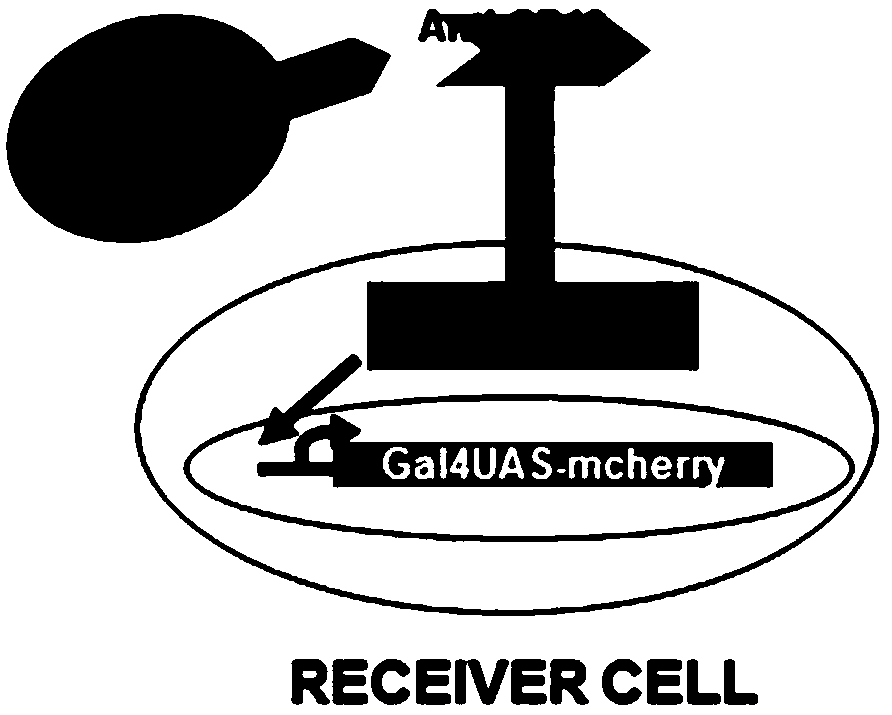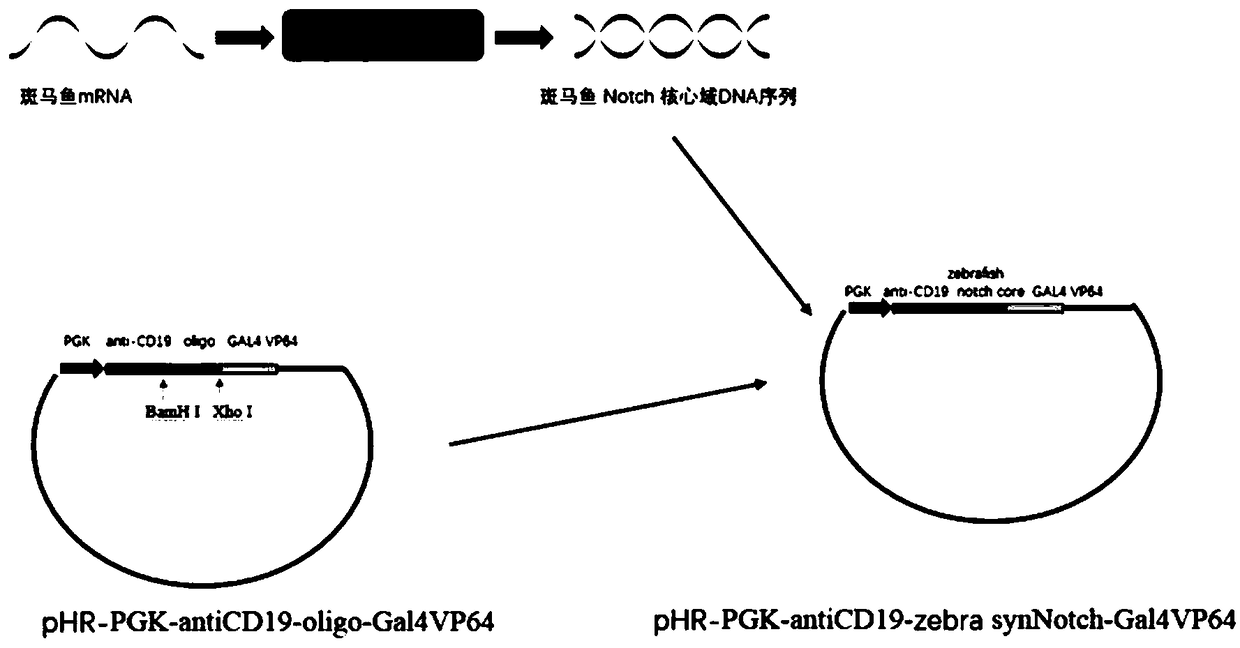Novel SynNotch synthetic acceptor and coding gene thereof
A technology for encoding genes and receptors, which is applied in the field of new SynNotch synthetic receptors and its encoding genes, can solve the problems of limiting the use of SynNotch, and achieve the effects of efficient activation, important economic value and significance
- Summary
- Abstract
- Description
- Claims
- Application Information
AI Technical Summary
Problems solved by technology
Method used
Image
Examples
Embodiment 1
[0024] Example 1 SynNotch synthetic receptor design containing the zebrafish Notch core domain
[0025] The structure of the synNotch receptor includes an extracellular domain, a Notch transmembrane core domain and an intracellular domain, wherein the extracellular domain can be replaced by a single-chain antibody or a nanobody, and the intracellular domain can be replaced by a transcriptional activation or transcriptional repression domain. The present invention uses antiCD19 single-chain antibody as the extracellular domain part, GAL4VP64 as the intracellular domain part, and replaces the mouse Notch transmembrane core domain with the zebrafish Notch transmembrane core domain that can be recognized and cleaved by protease to obtain the modified synNotch receptor , the structure of the synNotch receptor designed and transformed by the present invention is as follows figure 2 shown. figure 2 Structures of synNotch receptors containing murine or zebrafish Notch transmembrane...
Embodiment 2
[0026] Example 2 Construction of expression plasmid vector containing zebrafish Notch transmembrane core domain
[0027] The flow chart of the construction of the expression plasmid vector (pHR-PGK-antiCD19-zebra synNotch-Gal4VP64) containing the core domain of zebrafish Notch is shown in image 3 As shown, it specifically includes the following steps:
[0028] (1) Use Trizol kit to extract zebrafish embryo RNA, reverse it into cDNA, and use PCR primer pair (upstream primer F: 5'-GGCTGCTCCTCCAAGCCATG-3' and downstream primer R: 5'-ACGCTTGCGGCGGGCAATCA-3') to expand the zebrafish Fish Notch transmembrane core domain, the nucleotide sequence of the zebrafish Notch transmembrane core domain is shown in SEQ ID NO.1, and the corresponding encoded amino acid sequence is shown in SEQ ID NO.2;
[0029](2) Reconstruct the pHR-PGK-antiCD19-oligo (containing BamH I / Xho I)-Gal4VP64 plasmid (obtained from pHR-PGK-antiCD19-synNotch-Gal4VP64 (addgene #79125), specifically: cutting the core ...
Embodiment 3
[0031] Example 3 The synNotch system containing the zebrafish Notch transmembrane core domain was tested and verified on cells
[0032] The synNotch system containing the zebrafish Notch transmembrane core domain (pHR-PGK-antiCD19-zebrasynNotch-Gal4VP64) such as figure 1 shown. figure 1 It shows that the specific process of the synNotch system to improve cell recognition of specific extracellular signals is: when the anti-CD19 antibody single chain of the extracellular domain of the synNotch receptor binds to the CD19 antigen of the transmission cell (sendercell), the Notch transmembrane core domain is cleaved by protease , GAL4VP64 is released into the cell, GAL4 can specifically recognize and bind to the GAL4 binding site, and the VP64 transcriptional activation element will activate the transcription of the downstream mcherry gene and promote the expression of Mcherry fluorescent protein.
[0033] In the present invention, K562 cells are used as transport cells, U2OS cells...
PUM
 Login to View More
Login to View More Abstract
Description
Claims
Application Information
 Login to View More
Login to View More - R&D
- Intellectual Property
- Life Sciences
- Materials
- Tech Scout
- Unparalleled Data Quality
- Higher Quality Content
- 60% Fewer Hallucinations
Browse by: Latest US Patents, China's latest patents, Technical Efficacy Thesaurus, Application Domain, Technology Topic, Popular Technical Reports.
© 2025 PatSnap. All rights reserved.Legal|Privacy policy|Modern Slavery Act Transparency Statement|Sitemap|About US| Contact US: help@patsnap.com



